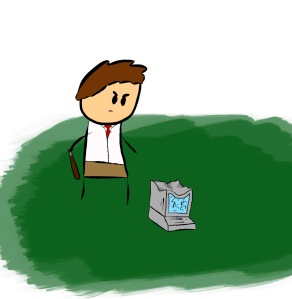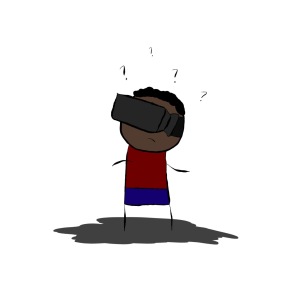“User experience” has almost become a buzzword in the tech world. In many companies, the term is just code for “user interface that doesn’t look like it’s from the 90s.” Nonetheless, there’s been a huge amount of enthusiasm for whatever user experience actually is lately, and it’s spurred a mass movement of putting design at the forefront of product focus – or at least giving that appearance. This newfound emphasis begs the question, though: how do you truly offer a “user experience?”
Here’s the short answer: you don’t.
At its most basic, an experience is nothing more than a moment in time. If you want to truly create an entire experience, you have to take into account all of the user’s preconceptions about every part of your product: their emotional state, any outside stimuli acting on them… the list goes on. It’s incredibly difficult to account for all of this, and actually, it borders on impossible. As such, most products that offer a great user experience simply aim to keep the moments of interaction with their product as stress-free and pleasant as possible.

Enabling truly efficient interaction is made possible by a field of study called Human-Computer Interaction, or HCI. HCI studies the mental processes of a user as they interact with a computer interface, and develops rules for the most effective input methods and interface layouts for different tasks. Scientists in this field create interaction models to quantify all of this data, and apply it to reduce the time required for the majority of users to complete a task.
User experience, on the other hand, goes beyond efficiency and explores hedonic response, better known by many as emotion. While many products have gotten incredibly easy to use, great user experience actually makes a person feel good about using a product and keeps them coming back, creating “stickiness” that product companies strive for. By targeting these hedonic reactions, companies can create a product that users connect with and willingly invite into their daily routine, rather than being tasked with dealing with “this new-fangled computer tomfoolery.”
So, how do we embrace the concept of user experience if it’s impossible to actually create an experience? We enable it, and design for experience rather than taking charge of the entire moment. We develop personas for who will be using the product, envision scenarios in which it will be used, and only then consider how we will actually implement the technology.
Developing empathy, or a deep understanding of the user, is the most important part of this product design model. Given this empathy, we can derive what the user will be sensing alongside our product, the mental filters through which they perceive various stimuli, and more. To create a truly immersive product, we would need to stimulate as many of these senses as possible, completely capture the user’s imagination, and hold them within the moment we create. These requirements make empathy an invaluable component of the development process.

So, how do we go from the idea of user experience to enacting a design that will enable true experiences? We get the engineers on board.
Engineers like to build. We like to take ideas, turn them into realities, and get them out into the world. But we rarely take into account how others will use them. We’re all guilty of this on some level, and I’m by no means exempt from this. We need to account for how our creations will affect people on an emotional level, and design products for experience rather than purely for form or function.
In the spirit of this thinking, why keep designers separate from engineers? The time I’ve spent learning about the design process and design thinking in general has helped me immensely as an engineer, and I feel that designers and engineers working together (or even being the same people!) results in better solutions and happier users.
Let’s work on enabling experiences, and making sure we keep touch with the people we’re building our products to serve.
Reblogged this on BT.X and commented:
People that have more experience is wiser.
Interesting and informative article. I’m interning in communications and we have a couple of user experience specialists on our team. It’s always a treat seeing them deconstruct our content and designs from the viewpoint of our target audience’s perceptions. Before assuming this position I’ve always sort of grouped UI, UX, and development people in the same pool – “computer people” – but UX is more about psychology than anything, really; you don’t have to be a “computer person” to think critically from a UX perspective.